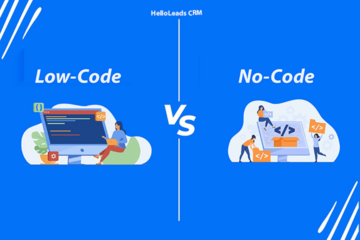
“In remote sales, success is defined by how well you can leverage technology to create personal and impactful customer experiences.”
Remote work has rewritten the rules for modern sales teams. In recent years, the world of sales has undergone a significant transformation, with remote work shifting from a temporary solution to a permanent reality. As companies continue to adapt to this new reality, Customer Relationship Management (CRM) systems have played a pivotal role in shaping how sales teams operate.
This shift demands new strategies and techniques. Sales teams face challenges like building virtual relationships, managing distributed teams, and making the most of digital tools. To thrive in this evolving landscape, it’s crucial to recognize the emerging trends that are reshaping remote sales.
In this blog, we’ll explore five key trends, drawn from CRM data analysis, that are transforming the remote sales environment. These insights will equip your team to tackle obstacles head-on and achieve sustainable growth in a rapidly changing world.
1. AI helps make better decisions
Artificial Intelligence (AI) has become an indispensable tool for modern sales teams, acting like a super-smart assistant within CRM systems. By analyzing vast amounts of data, AI delivers valuable insights that enable more accurate predictions and improved decision-making.
For instance, AI might suggest reaching out to customers who purchased a specific product with an offer for a related accessory. These insights allow sales teams to prioritize their efforts and personalize their approach, ultimately increasing both efficiency and effectiveness. With AI, decision-making becomes faster, smarter, and more strategic.

2. Easier communication with integrated tools
Effective communication in remote sales is not about the technology you use, but how you use it to connect and collaborate.
In remote sales, effective communication isn’t just about having the right tools—it’s about using them strategically to foster connection and collaboration. CRM systems are now integrating seamlessly with popular communication platforms like Zoom, Slack, and Microsoft Teams, making it easier for sales teams to stay connected and informed.
With these integrations, sales reps can schedule meetings, conduct video calls, and share updates—all within the CRM. For example, a sales rep can initiate a Zoom call, log the meeting details, and add notes and follow-up tasks directly into the customer’s profile, ensuring that all interactions are tracked and easily accessible. This integration boosts teamwork and provides a complete, real-time view of customer relationships, streamlining both communication and collaboration.
3. Focusing on customer experience
In the remote sales landscape, strong customer relationships are key to sustaining long-term success. Modern CRM systems are increasingly designed to support a customer-centric approach, ensuring that every stage of the customer journey—from initial contact to post-sale engagement—is managed with care and precision.
This trend emphasizes the importance of personalized interactions and building trust. By tracking customer interactions and preferences, sales teams can deliver tailored experiences, increasing customer satisfaction and loyalty.
For instance, a CRM system can alert a sales rep to follow up with a customer who had a recent issue, offering a discount on their next purchase to demonstrate care and appreciation.
4. Leveraging social media for sales

Social media has become a powerful tool for sales professionals. CRM systems are integrating social media platforms like LinkedIn and Twitter to enable seamless engagement with potential customers. Sales reps can monitor social media activity, identify prospects, and build relationships online.
For instance, a sales rep might spot a LinkedIn post where a prospect is discussing challenges their business faces. With CRM integration, the rep can seamlessly engage by offering insights or solutions, positioning their company as an expert in the field. This approach, known as social selling, helps reps proactively connect with potential customers in real time, expanding their reach while building trust through personalized engagement.
5. Streamlining operations with automation
Automation is transforming the way sales teams work. CRM systems are incorporating automation features to handle routine tasks, freeing up sales reps to focus on strategic activities and building relationships.
Tasks like data entry, follow-up emails, and lead qualification can be automated, reducing human error and improving efficiency. For example, a CRM can automatically trigger personalized follow-up emails to prospects who haven’t responded, update lead statuses based on interactions, or schedule reminders for the sales team to reconnect with clients at the optimal time. This smart automation not only enhances productivity but also ensures that sales teams can devote more time to high-impact, relationship-building activities that drive growth.
Conclusion: Embracing the Future of Remote Sales
The future of remote sales is dynamic and rapidly evolving, with AI, automation, and integrated communication tools at the forefront. Success in this new landscape will come to organizations that not only embrace these technologies but also remain agile, adapting their strategies to align with the shifting needs of customers.
The remote sales environment is challenging, but with the right tools and a customer-focused approach, sales teams can thrive. By understanding and leveraging these trends, you’ll be better positioned to navigate the complexities of remote sales and drive sustained growth for your organization.
Share this blog :










